…continued from Fictional Canon: What Counts?…
_______________________________
_______________________________________________________________________________________
_______________________________
RELAUNCHED, REBOOTED, AND BEWILDERED
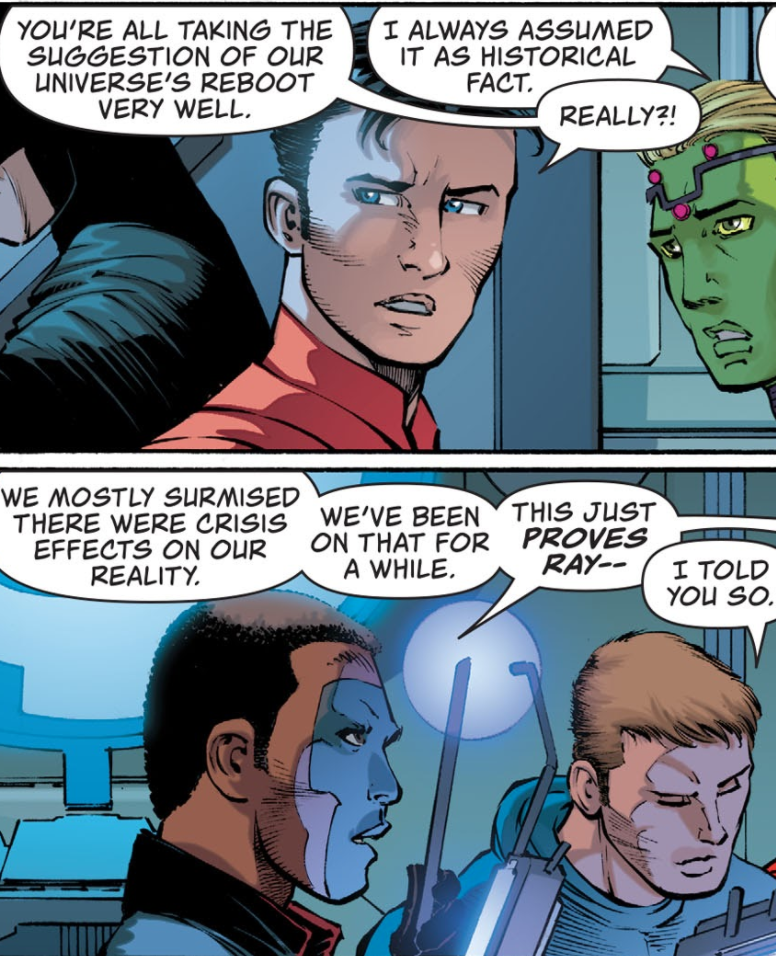
Action Comics #1022 by Brian Michael Bendis, John Romita Jr, Danny Miki, & Brad Anderson (2020)
Dipping one’s toes into fictional canon and examining how the concept pertains to superhero comics, it’s easy to see the difficulty in building a single, coherent, and functional timeline. But to make matters worse, Batman actually has multiple canonical timelines. This isn’t simply due to Batman’s long publishing history or different media outlets, which are only part of the justification, but more-so due to DC’s major reboots. Reboots are when the company decides to scrap everything and start over from scratch, usually via a big crossover story-arc event that acts as a Jonbar hinge (i.e. a crucial divergence point between two or more timeline outcomes). Except reboots never really start over from scratch. “Wiping the slate clean is impossible,” as William Proctor (channelling scholar Jim Collins) says in Reboot Culture (2023). According to Proctor, the “[Batman] text always comes trailing its intertexts and re-articulations. This ‘slate’ is more akin to a palimpsest than a tabula rasa, and these ‘seemingly endless re-articulations cannot be exorcised from ‘the slate’ due to the many transmedia lives of the Batman palimpsestuously bleeding-through.” Proctor adds, “Reboots cannot delete previous texts from the cultural memory banks.” In his article “New Millennial Remakes” (2017), Constantine Verevis agrees that new canon cannot erase or overwrite prior canon, but instead simply adds novel layers and associations to what came before. In other words, tons of old story always gets folded into the “new continuity”—and this happens in very interesting ways, which we’ll address in our next section.
Superhero continuity, as defined by journalist Abraham Riesman, is “the sum of all the stories about every character in a given fictional universe.” Riesman explains, “What Superman does in one issue can be referenced 20 issues later; what Batman does in one story arc might affect what happens to Wonder Woman in another. As decades of tales roll on, continuity becomes more and more byzantine. To understand a new story, you often need to be familiar with a pile of existing continuity, which presents a dauntingly high bar for a newbie. It has been attempts at treating that chronic illness that compelled DC to initiate its many line-wide reboots.” Sure enough, DC has indeed initiated reboots in the past, having reset its characters roughly every twenty-five years since the company took off in the late 1930s. (Only more recently has DC broken from its MO and jumped the gun on rebooting before the twenty-five year mark.) Since reboots influence reader experience and the actions of authors (in relation to canon) more than anything else, one must have prerequisite scrutable knowledge about them to fully understand Batman’s multiple timelines and continuity in general. Let’s take a gander at the history of DC’s reboots and the greater publication eras associated with each.
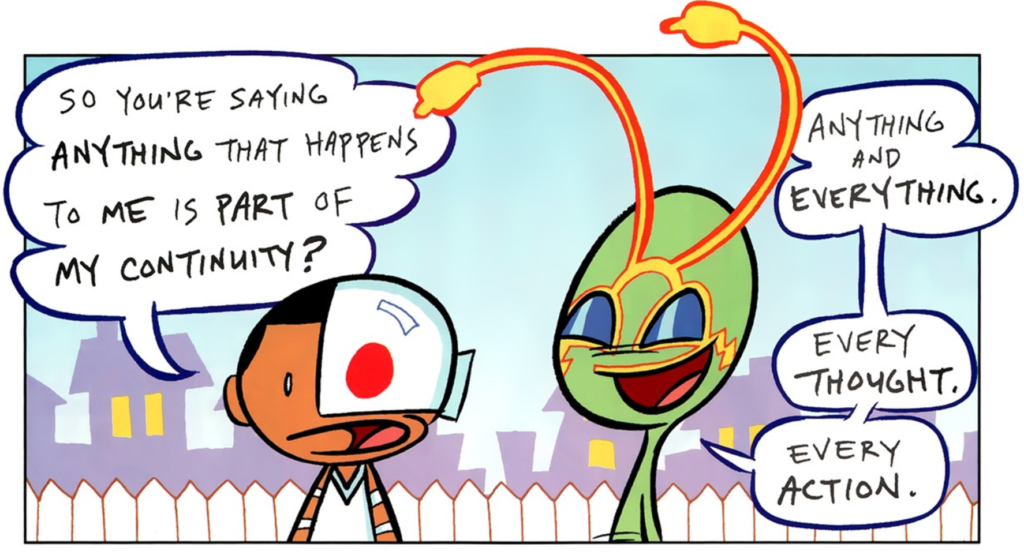
Tiny Titans #30 by Art Baltazar & Franco Aureliani (2010)
For the intents and purposes of the Batman Chronology Project, I will refer to the classical comic book “ages” that were born from line-wide continuity reboots—the GOLDEN AGE (1938-1960), the SILVER AGE (1960-1985/1986), the MODERN AGE (1985/1986-2011), and NEW AGE (2011-the present). Specifically for DC, the New Age began with “The New 52” from 2011 to 2017, after which came the Rebirth Era (2017 to 2020), and then the Infinite Frontier Era starting in 2021.
Batman wasn’t around until the Golden Age of comic books, but before that there was the so-called PRE-MODERN AGE (or PLATINUM AGE, VICTORIAN AGE, or PULP AGE), which has its roots in the mid nineteenth century, ending in 1938. In a sense, this “first ever comic book reboot” began with the creation of Superman and Batman at DC at the end of the 1930s. Ken Quattro has also coined the term NASCENT AGE to describe the period between 1933-1938, which either replaces or overlaps with the end of the Pre-Modern Age. According to Quattro, 1933 was the first year that the format of comic books began to resemble what they would look like in the Golden Age and beyond.
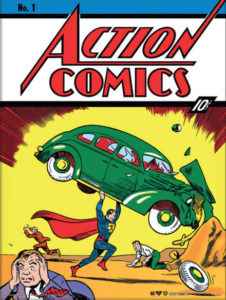
Action Comics #1 by Jerry Siegel, Joe Shuster, & Jack Adler (1938)
Superman debuted in 1938 (created by Jerry Siegel and Joe Shuster) and Batman in 1939 (created by Bill Finger with minor contributions from the iniquitous Bob Kane), essentially starting DC Comics’ shared narrative universe—and the Golden Age of comics (1938-1960, roughly). Ken Quattro has labeled the end of the Golden Age as the GENRE AGE or CODE ERA, reflecting the late 1950s boom of EC’s horror line, horror’s influence on the medium as a whole, and the subsequent Comics Code Authority being created in response. Heidi MacDonald of “The Beat” numbers the original Silver Age DCU as “DCU 2.0” since it comes from the first reboot and is therefore the second DCU. According to this logic, the Golden Age is “DCU 1.0.” The official end of the Golden Age is highly debatable since the beginnings of the Silver Age have a wide-range of possible starting points—as we will see below.
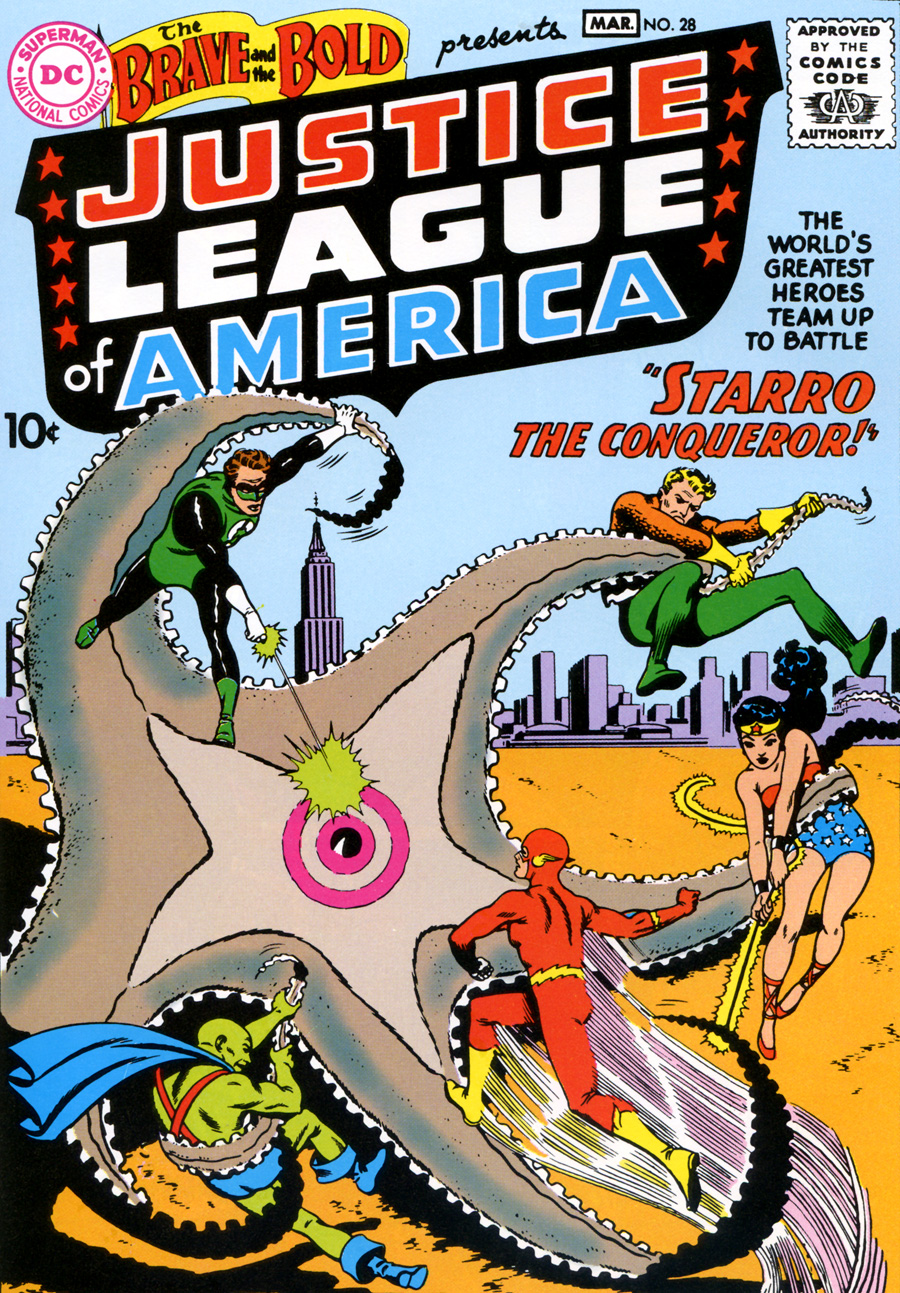
The Brave and The Bold #28 by Gardner Fox, Mike Sekowsky, Murphy Anderson, & Jack Adler (1960)
In the 1950s, DC wanted a fresh start with a new type of modern hero. Thus, the Silver Age was born. However, unlike a total line-wide reboot, DC staggered this reboot title-to-title, which gives the Silver Age reboot a highly debatable starting point. The Silver Age start-date can technically be plotted anywhere from the mid Fifties to the mid Sixties, depending on how you look at it. Most place the start of the Silver Age somewhere between 1954 and 1964. Many different (and valid) arguments can be made supporting various starting points within that time frame. Essentially, DC rebooted approximately twenty-five years after it started. This uniquely created (or, rather, retroactively revealed the existence of) two main Earths: Earth-2, featuring the characters that started in the late 30s and early 40s (now older and semi-retired), and Earth-1, featuring the rebooted rookie versions of their elders. This also created a hierarchy that placed Earth-1 as DC’s main focus or primary line (or master-narrative, as coined by Proctor) while relegating Earth-2 as its secondary focus. Nevertheless, multiple Earths meant the existence of multiple universes i.e. a multiverse. Thus, superhero world-building had a fictive metaphysico-theologic-cosmology (and/or ontological) foundation that lives on to this very day. Every character lives in a universe in a multiverse in an omniverse—and all of the aforementioned hierarchical bodies all exist on a single shared continuum. Every time reboots occur, this all gets rebooted together.
In terms of nomenclature, the Silver Age can be subdivided—the early years of the Silver Age being the SILVER AGE PROPER (1954-1971 or 1960-1971, roughly) versus the later portion being the BRONZE AGE (1971-1986). Writer Will Jacobs has goofily referred to the Bronze Age as the AWKWARD AGE—a sort of transitional era from Silver Age to Modern Age. Ken Quattro often refers to the Bronze Age as the NEO-SILVER AGE. Newsman Jim Curtin referred to the entire Silver Age as the SECOND GOLDEN AGE, speaking specifically of the rise of Marvel Comics during this time period. And as mentioned above, Heidi MacDonald numbers the original Silver Age DCU as “DCU 2.0.”
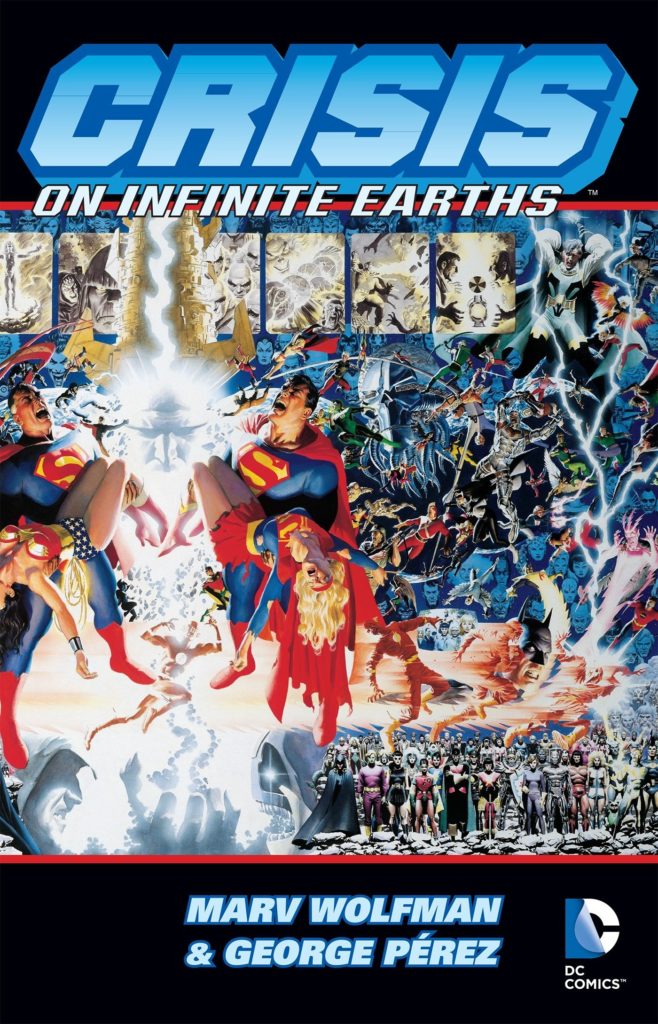
Crisis on Infinite Earths by Marv Wolfman & George Pérez (1985-1986)—cover by Pérez & Alex Ross (2000)
Almost as if on cue, roughly twenty-five years after the initial multiverse revelation, the seminal Crisis on Infinite Earths crossover was published in 1985-1986, collapsing the existing multiverse and rebooting it all into one new unified Earth where all characters had a new shared history, which was slowly meted-out bit-by-bit over the course of the following decade. This is the dawn of the Modern Age of superhero comics. In an unprecedented move in 1987, DC commissioned Marv Wolfman and George Pérez to create an “official” timeline of its history in the form of the prose narrative History of the DC Universe #1-2. Columnist/reviewer Keith Callbeck comments on how novel the creation of an “official” chronology truly was for DC Comics, referring to it as DC’s Modern Age “Chronology 1.0.” Note that Callbeck’s numerical system for DC’s officially published timelines is not be confused with Heidi MacDonald’s numerical system for DC’s continuities; Callbeck’s “1.0” (the prose chronology from History of the DC Universe) specifically details MacDonald’s “DCU 3.0” (the Modern Age). In other words, the History of the DC Universe / Zero Hour timeline is DC’s first avowed narrative extrapolation of DC’s third canon. Importantly, History of the DC Universe was followed up by an “official” visual timeline in Dan Jurgens’ 1994 soft reboot, Zero Hour: Crisis in Time. (Notably, the first ever use of the word “reboot” in direct relation to fiction can be attributed to fans discussing Zero Hour online in 1994.)
Up to this point, we’ve been purely addressing hard reboots i.e. major overhauls that restart an entire comic line’s continuity “from scratch.” A soft reboot—also sometimes called a “relaunch”—can be defined as a company overhaul or marketing campaign that resets storytelling themes, issue numbering, or narrative status quo (as opposed to reseting continuity). Sometimes soft reboots start out intended to be hard reboots, but then editorial cold feet leads to an annulment where changes are drastically or quickly reverted back to what they were before. Due to industry debate over the definition of a reboot, so you’ll often annoyingly (and confusingly) see “relaunch” interchangeably used with “reboot,” though this is technically incorrect.
A few years after Zero Hour, Scott Beatty authored an “official” text-based (prose-style) timeline of the DCU, albeit specific to Batman, in Batman Villains Secret Files and Origins #1 (1998). A few years after that, Robert Greenberger and Phil Jimenez authored another “official” visual timeline of the DCU in Guide to the DC Universe 2000 Secret Files and Origins #1 (2000). DC followed with a few more soft reboots—2003-2004’s Superman: Birthright, 2006’s Infinite Crisis (2006), and 2009-2010’s Superman: Secret Origin. These soft reboots are all worth mentioning, but they aren’t pertinent for our discussion at hand, so we’ll skip them for now. Although, following Infinite Crisis in 2006, DC ordered an updated “official” narrative timeline à la Wolfman and Pérez’s History of the DC Universe. Thus, sporadically throughout 2006-2008, readers were treated to Dan Jurgens’ two-part arc called “History of the DCU” and “History of the Multiverse” (in the second feature sections to 52 and Countdown, respectively). These “Histories” form what Keith Callbeck refers to as DC’s second narrative chronology aka its Modern Age “Chronology 2.0.” In 2012, with the hindsight of the Modern Age having ended, Callbeck crafted his own narrative version of DC history, calling it “Chronology “3.0,” finally matching McDonald’s “3.0” nomenclature.
One can also split the Modern Age (1985/1986-2011) into subsections: The early years of the Modern Age in the late 1980s being the IRON AGE, DARK AGE, or COPPER AGE where comics became more “adult-themed” and darker in general; the CHROMIUM AGE, GILDED AGE, or IMAGE AGE of the 1990s, named after Image Comics and the subsequent style that permeated all companies in that decade—which was then followed by the bubble bursting in 1996 and the steady decline of the industry for five years; and the DYNAMIC AGE from 2001 to 2011 where DC and Marvel began branching out with more forward-looking, diverse storytelling by contracted big-name talents. The New 52 Batman Wiki site (along with many others) refers to the period between the original Crisis and Zero Hour (1986-1994) as the SIGMA TIMELINE. Allan Casavettes (of the video podcast Strange Brain Parts) uses the Copper Age terminology to describe the period between 1985 through 1996, but then refers to the 1996 through 2005 period—from Marvel’s bankruptcy up until Infinite Crisis—as the Dark Age, after which follows his MODERN AGE PROPER. As mentioned a few times already, using Heidi MacDonald’s numbering system, the Modern Age is “DCU 3.0.” A few other names attributed to the later Modern Age canon: the DOWNLOADABLE TORRENT AGE (as half-jokingly named by Mike Sterling); the FAN-FICTION AGE (as angrily named by Alan David Doane); the ZERO TIMELINE (a post Zero Hour name coined by The New 52 Batman Wiki site); the POLYBAG AGE (not attributed to anyone specifically); and the FINAL AGE (also not attributed to anyone specifically).
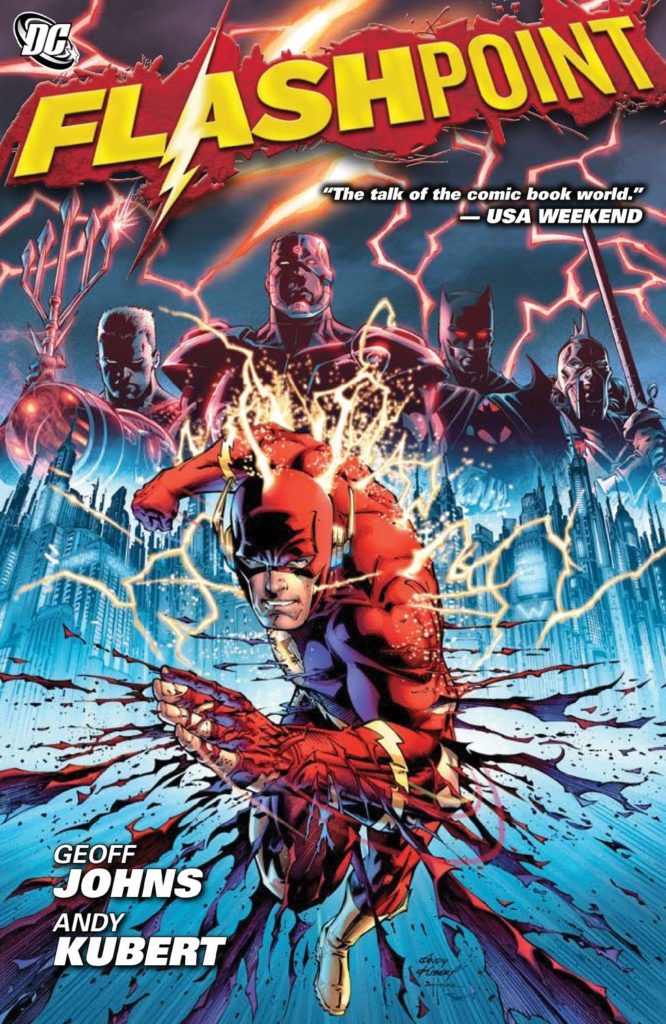
Flashpoint Vol. 2 by Geoff Johns, Andy Kubert, Sandra Hope, & Alex Sinclair (2011)
Twenty-five years after the original 1985-1986 Crisis, Flashpoint brought about the third major reboot (don’t call it a relaunch) in the history of the DC Universe. In 2011, with Flashpoint, DC rebooted yet again into its New 52 era. Despite this being the hardest reboot ever, DC glaringly neglected to release an “official” history like they had with Wolfman and Pérez’s History of the DC Universe or Jurgens back-ups from 52 and Countdown. Why not? Likely because the New 52 was not only the hardest reboot, but the messiest as well. Thus, Keith Callbeck built his own “official” New 52 chronology, echoing the previous “official” timelines by Wolfman/Pérez and Jurgens.[1]
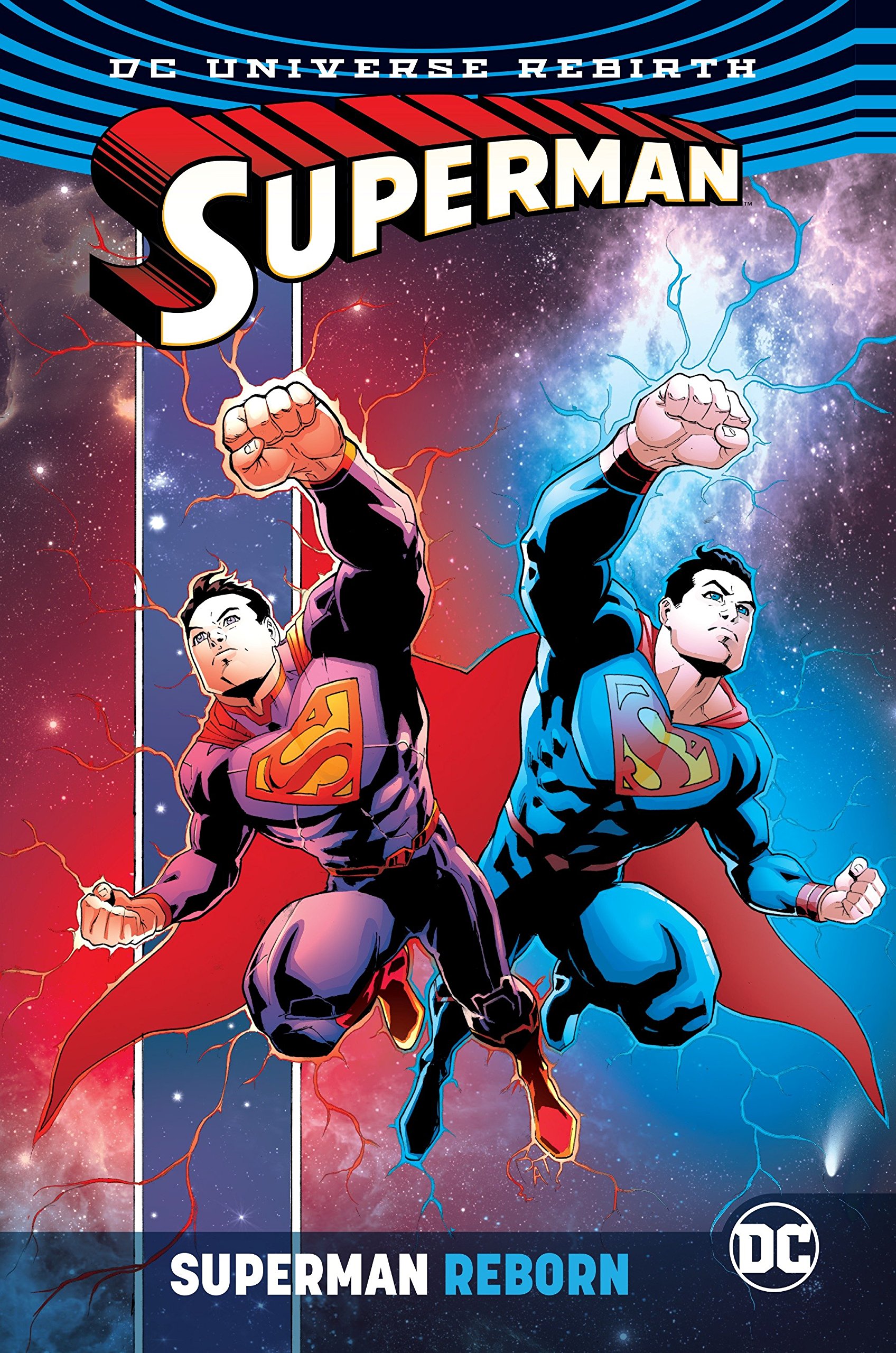
Superman Reborn by Dan Jurgens, Peter Tomasi, Patrick Gleason, Paul Dini, & John Kalisz (2017)
While DC began the current NEW AGE (as I like to call it) with the New 52 hard reboot in 2011, Marvel also kickstarted the New Age with its own “NOW!” soft reboot in 2012. Both DC and Marvel ushered in this era with a repurposed focus on nostalgia, even darker themes, decompressed continuity, and mega event crossovers. (Although, these themes were in a state of flux from 2011 to 2018 with each change seeming like a response from upper-management to the direct market, feeling out what audiences would go for or reject. In 2015, Marvel’s “All New, All Different” relaunch brought about lighter and more heterogeneous fare, although it soon abandoned prioritization of diversity in favor of an over-saturation of crossovers and near-constant/subsequent overhauls akin to how TV shows have new seasons each year. Marvel, like someone with a substance abuse disorder that can’t get enough of a dangerous fix, stuck to its TV-style schedule, relaunching again in both 2017 and 2018.) But getting back to DC: In 2015, the company’s line-wide storytelling shift, entitled “Rebirth,” brought the company’s orientation back to continuity-driven legacy-focused storytelling. 2017 unbelievably brought a change to the predictability of DC’s hard rebooting calendar, delivering a peremptory line-wide reboot with its “Superman Reborn” arc, kickstarting the Rebirth Era proper. The abandonment of the New 52 (in favor of the rebooted Rebirth Era) happened for various reasons, including a cloudy über-narrative and negative fan response. Rebirth ended in 2020 with the Death Metal soft reboot, ushering in 2021’s Infinite Frontier Era, a continuation of Rebirth themes but with emphasis on less-guarded continuity, open embracement of all prior stories, and more diversity.
The New Age has several different names: The NEW GOLDEN AGE (as claimed by Douglas Wolk); the SECOND GOLDEN AGE (conceived by Paul Levitz); the BOUTIQUE AGE (as labeled by Ken Quattro); the MEGA-CORPORATE AGE (as labeled by Charles Hatfield); the CRISIS ERA (as labeled by Heidi MacDonald); the CURRENT AGE (as designated by several internauts, including site contributor Nico); and the PRISMATIC AGE (as defined by Duncan Falconer of the Mindless Ones blog—and backed by Andrew Kunka, Grant Morrison, Véronique Emma Houxbois, Vaneta Rogers, Andrew Hickey, and Marc Singer). Using Heidi MacDonald’s numbering system, the New 52 is “DCU 4.0” and the Rebirth/Infinite Frontier Era is “DCU 5.0.”[2] Cut to 2020-2021. After multiple head office firings, an industry-shattering global pandemic, cancelled reboots (Doomsday Clock and 5G), and a replacement “anti-reboot” (Dark Nights: Death Metal) that basically re-avowed Doomsday Clock, DC entered previously uncharted territory.
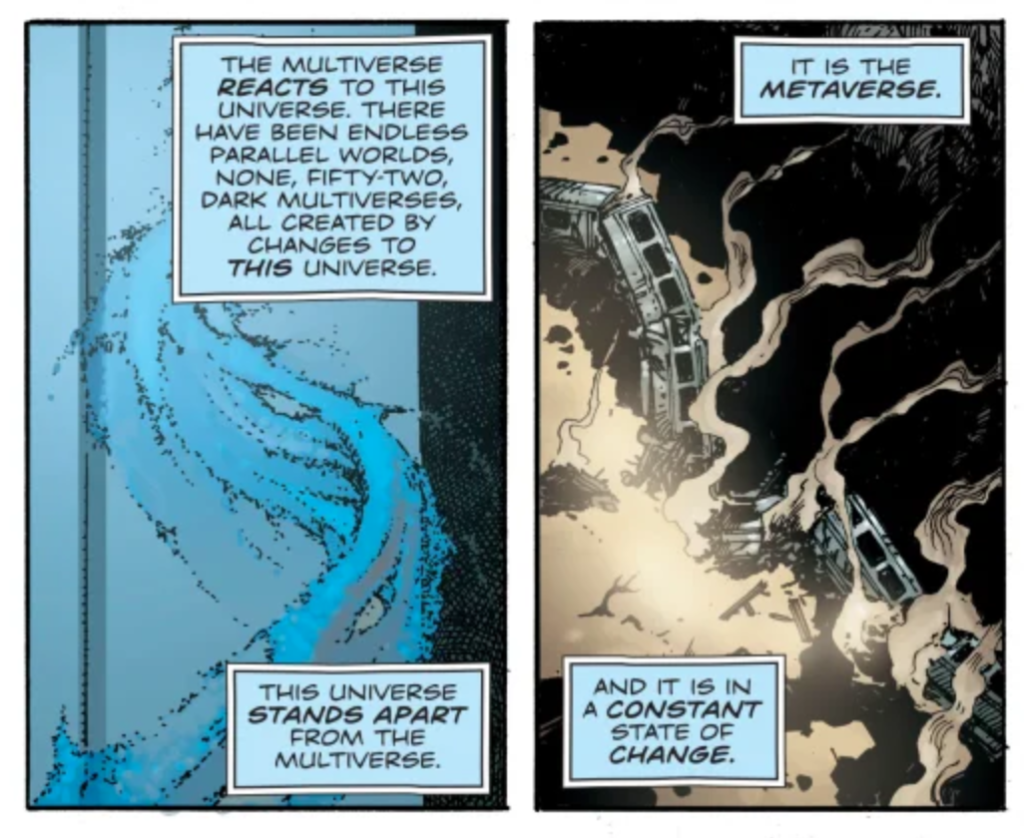
Doomsday Clock by Geoff Johns, Gary Frank, & Brad Anderson (2019)
As already emphasized, for the purposes of this site, most of the aforementioned subdivisions and alternate names will be ignored. I will focus on the typical Golden Age, Silver Age (Bronze Age included within), Modern Age, and a divided-up New 52 and Rebirth/Infinite Frontier Era. Geoff Johns encapsulates this entire complex history of reboots under an umbrella term called the “metaverse,” which he first mentioned in Doomsday Clock (2019). The term Metaverse was first coined by Neal Stephenson in his 1992 book Snow Crash, but with different cyberpunk meaning, referring to a proto-cyberspace virtual reality. This was echoed—albeit briefly—in the Ernest Cline novel Ready Player One (2011) and Steven Speilberg’s film adaptation (2018). It’s not until 2020-2021 that “metaverse” entered the mainstream lexicon under its Stephensonian definition of an embodied MMO (massively multiplayer online) or virtual reality experience. Because we now commonly think of “metaverse” as a virtual reality space, it might be prudent to differentiate Johns’ metaverse as the “fictional metaverse.” It’s also important to note that John’s “fictional metaverse” speaks to a real world chronological/linear history of a fictional narrative line in terms of its publication (as opposed to the sum content—i.e. whole collection of alternate timelines—of a fictive network of stories). And just as there are many fictive universes and multiverses in the greater omniverse, there are also many real world publication histories that go along with them, meaning there are many metaverses in what we could call the greater omni-metaverse.
By catering to this tangled “metaversal” history, it might seem as though DC acts exclusionary, doing itself a disservice by making things so sprawling and labyrinthine. Reboots are “the most cynical of [narrative] choices,” says critic Mike Sterling, “but not unwarranted by the publishing strategies of the Big Two. [Reboots] speak to a lack of faith in publishers providing a satisfying resolution to a story, or committing to any significant changes or plot developments. The Reset Key remains a looming threat.” The possible negatives associated with a reboot—exclusivity, convolution, indecisiveness, apostasy, and apprehension—cannot be denied. However, while knowledge (and acceptance) of this complicated history is essential if you want to track canon or continuity, it doesn’t need to be understood or even known to simply enjoy the comics. They stand on their own—you can pick up a collected trade paperback and read a totally inclusive story that begins, has rising action, a climax, and denouement. But the beauty, especially for me, is that if you already like comics, then knowing about this history will only serve to augment your enjoyment.
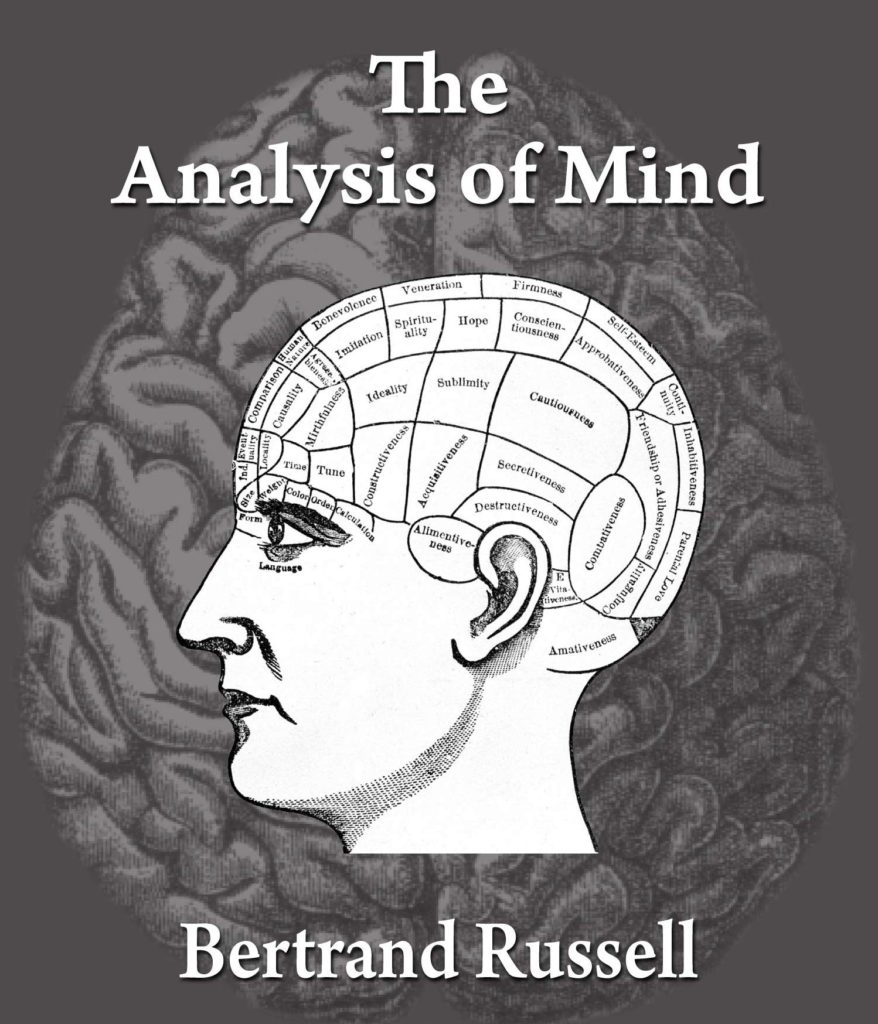
The Analysis of Mind by Bertrand Russell (1921)
But all this talk about authorship and implementation, and we haven’t mentioned how the characters themselves are impacted by reboots. How does Batman (the man himself) experience something as prodigiously transfigurative as a reboot? Bertrand Russell, in his 1921 masterpiece The Analysis of Mind, sums it up perfectly by supposing that the planet might only have been created a few minutes ago, furnished with a humanity that “remembers” an illusory past. As per Jorge Luis Borges in Tlön (1940), this ostensible negation of time demonstrates that “the present is indefinite, the future has no reality other than as present hope, that the past has no reality other than as a present memory.” Or, from another perspective, again from Borges, we could say that all time has already transpired and one’s life is “only the crepuscular and no doubt falsified and mutilated memory.” These Borgesian approaches, especially the latter, are really exactly how characters within the world of the superhero genre experience (or rather don’t experience) reboots. For Batman, when a reboot happens, all his memories become nothing but a “mutilated” historical record that reflects an “illusory past.” Of course, Batman wouldn’t have anyway of knowing. And if he were to even catch a slight wind of this—as he sometimes actually does in the comics—it would be far to much for him to fully decode.
In Narrative Discourse: An Essay in Method (1972), literary theorist Gérard Genette coins the term “narratological metalepsis,” defined as “a paradoxical transgression of the boundaries between narrative levels or logically distinct worlds.”[3] In a nutshell, this is a more structural interpretation of “breaking the fourth wall,” which goes hand-in-hand with the meta-nature of how characters interact with reboots. Following Genette’s further extrapolation of metalepsis in Métalepse: From Figure to Fiction (2004), scholar Douglas Estes, in The Temporal Mechanics of the Fourth Gospel (2008), adds to (or simplifies) Genette’s thesis by describing metalepsis as occurring when an omniscient narrator enters the world of the story that they are narrating. This happens time and time again in literature (in Kurt Vonnegut’s Breakfast of Champions, Dennis Potter’s Hide and Seek, Alasdair Gray’s Lanark, etc), but maybe most notably (in terms of DC Comics) when Grant Morrison entered the pages of their own Animal Man run in 1990. Genette’s metalepsis and any kind of fourth wall-breaking are close cousins to the Borgesian intellection mentioned above.
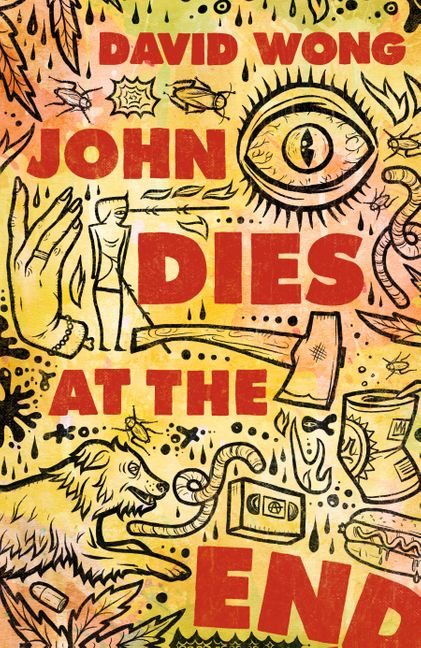
John Dies at the End by David Wong (2001)
If you are looking for less academic but equally heady descriptions of how fictional characters experience reboots (beyond Genette or Borges), seek out “The Twentieth Voyage” of Stanisław Lem’s The Star Diaries (1954), Ursula K Le Guin’s The Lathe of Heaven (1971), and David Wong’s John Dies at the End (2001). A promotional pull quote from a 1976 Time magazine book review of The Star Diaries even refers to Lem in particular as “The Borges of scientific culture.” Just as sci-fi writers have engaged with the metaphysics of reboots, scientists and philosophers have long tried to apply these same metaphysical rules in an effort to better understand the cosmic nature of reality as well. In A New Refutation of Time, Borges recalls Buddhist texts that say the world annihilates itself and reappears six thousand five hundred million times a day. Who knows, maybe we’ve been rebooted more often than we can count—and more often than Batman.
_______________________________
_______________________________
_______________________
_______________________________________________________________________________________
_______________________________
Our next section will detail my process when it comes to creating timelines. Click on the following link to read Building Timelines for Dummies.
_______________________________
_______________________________________________________________________________________
_______________________________
_______________________________
- [1]COLLIN COLSHER: In 2014-2015, Grant Morrison put out a series called The Multiversity, in which they took DC’s NON-FICTIONAL publication history that I just told to you about and turned it into FICTIONAL CANON. While The Multiversity was a follow-up to Morrison’s previous meta-dabbling-with-fictional-canon story Final Crisis, The Multiversity went even deeper down the rabbit hole and entered much wilder territory as a self-aware comic book series that addressed prominent issues about the comic book industry. We are talking about reaching never-before-achieved-or-attempted levels of meta-meta-meta-narrative, what we could even call meta-literalism. Not long after, Geoff Johns—in the pages of Justice League Vol. 2 (2015), DC Universe: Rebirth (2016), and Doomsday Clock (2018-2019)—pulled off similar narrative maneuvers and garnered similarly amazing ultra-meta results. Rookie comic book writer Jeff King attempted a similar feat with Convergence (2015), but this disastrous arc never came close to matching the sophistication of the works of Morrison or Johns. Sadly, Convergence doesn’t have general deference for fictional canon at all, let alone even a basic understanding of the concept. Obviously there’s more to say, but metafiction is a topic for another discussion! However, if you’d like to dive headfirst into it right now, check out my blog piece “Infinite Frontier: The Physics and Metaphysics of the Omniverse and Beyond.” And for an excellent summary of what made Convergence such a colossal failure, read the introductory pages to The American Comic Book Industry and Hollywood by Alisa Perren and Gergory Steirer.↩
- [2]COLLIN COLSHER: The Prismatic Age, as Véronique Emma Houxbois postulates, is “a period in which superheroes are defined not so much in comparisons to each other, but in relation to multiple iterations or derivatives of themselves.” The Prismatic Age also revolves around mash-ups—not just the mashing-up of characters (which had been done to death in the 1980s-1990s), but also the mashing-up of continuities, histories, genres, and styles. This includes storytelling that is referencing references of references, which are in turn references of references themselves. You get it. While certainly existing as the epitome of superhero comics starting in 2011, the Prismatic Age actually has its roots well before that. Kurt Busiek’s Astro City (1995), all of Warren Ellis’ oeuvre since Stormwatch (1996), most of Alan Moore’s oeuvre since Supreme (1996), most of both Mark Waid’s and Grant Morrison’s oeuvre since the late 90s, most of Mark Millar’s work since taking over for Ellis on The Authority (2000), Brian K Vaughan’s Ex Machina (2004), and Gail Simone’s Welcome to Tranquility (2007) come to mind as Prismatic titles before the actual christening of the age proper. The Mindless Ones Blog is quick to point out that “Reign of the Supermen” (published way back in 1993) is Prismatic as fuck. Basically, comic book era taxonomy has always been (and continues to be) far from an exact science.↩
- [3]COLLIN COLSHER: Narratological metalepsis is also known as (or can be broken down further into) “narrative metalepsis,” “rhetorical metalepsis,” “lectorial metalepsis,” “authorial metalepsis,” “narratorial metalepsis,” “ontological metalepsis,” “discourse metalespsis,” and probably more. For the purposes of this text, I’ll simply refer to the whole umbrella as “metalepsis.” For even more on metalepsis, see Marie-Laure Ryan’s “Metaleptic Machines” in Avatars of Story (2004), Monika Fludernik’s “Scene Shift, Metalepsis, and the Metaleptic Mode” in Style (2003), and John Pier’s “Metalepsis” in The Living Handbook of Narratology (2011).↩


Just stumbled upon this, a few years down the road. A great piece, thanks for the mention of my “History of the DC Universe 3.0.”
A correction though, I wasn’t referring to the New 52 being a third iteration. I was attempting a new “History of the DC Universe.” Wolfman/Perez did the first, then another was done by Dan Jurgens as backups in 52 (and Countdown as ver 2.5). Then mine as the third.
Thus 3.0
Hi Keith! And happy new year! Sorry to misinterpret your work (which I love, by the way). My assumption was that a New 52 timeline-building project (not an easy task) labeled “3.0” meant that there were two prior continuities you were referencing. But thanks for the clarification on this! Accordingly, I will correct this on my site.
I just wanted a list…